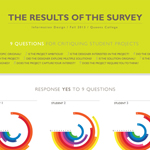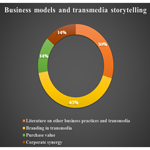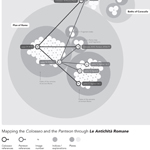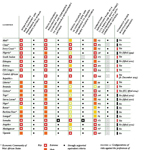Volume VIII, Issue 1
The Communication Design process was often considered a three-stage activity: first, a concept was developed, then a tangible design was produced, and this was then presented to an audience through the available channels — usually print or broadcast media. Information design practice involves the same central task, the making of tangible design; however, the focus at each end of the process is generally more analytical, staged, and objective. From the outset there needs to be great refinement in the data/concept development. The source data, once identified and accessed, must be modeled through an effective algorithm. This can be a "conceptual algorithm” that determines how the information will be intellectually modeled, or a computational algorithm that automates a tangible result. Today’s designers also have great control over channels of distribution and this permits investigation into user experience and interface workflows.
For the kick-off of our eighth volume, the Parsons Journal for Information Mapping, contains articles on: the transmedia narrative, the greater social impact of arms trade treaty negotiations, mapping non-linear text/image data sets, and mapping the (design) critique process. In every case the challenge is to look at source data that is both qualitative and quantitative and conceptually process this information in order to reveal heightened insight. All the applied “algorithms” are intellectual ones conceived by the authors; these are applied to their chosen data sets, or in most cases here, source examples. For information designers the study of data kinds and sources against the interpretation and ultimate processing and “through-put” practice is one of the three pillars of capability. (The others being the ultimate visualization of the models so derived and their effectiveness in the hands of users.) We hope you enjoy the challenges faced by the authors and the heightened insights their interpretive skills provide via the resultant models.
Ben Rubin, Publisher, and William Bevington, Editor-in-Chief
Parsons Journal for Information Mapping

Mapping The Critique
by Kathryn Weinstein, MFA

The Impact of India-UK Co-Production agreement: A perspective of Transmedia Story-telling and Business models in films
by Amritha Subhayan Krishnan, MA & Vivek Mohan, PHD

Visually Mapping Cross-Referential Relationships Within Non-Linear Data Sets: Looking at Le Antichità Romane
by Brad Tober, MDES

Norm Diffusion: Understanding Risks in Relation to Identity Formation in the Arms Trade Treaty Negotiations
by Tegg Westbrook, MA

